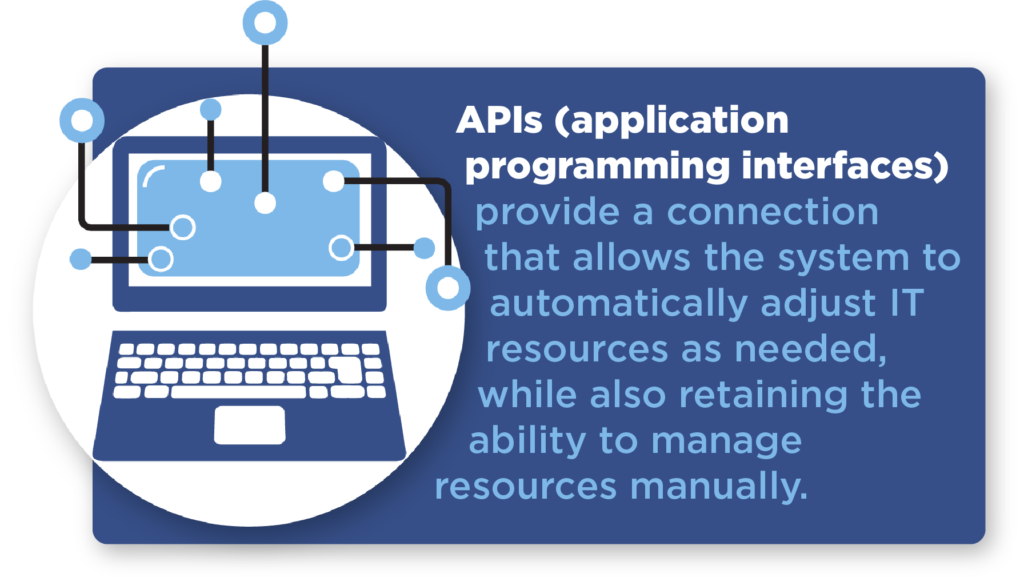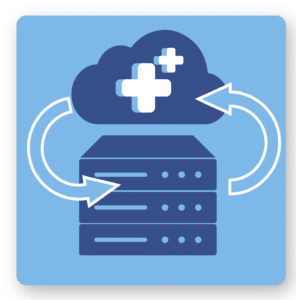How Enterprise Cloud Storage Stacks Up Against Legacy Storage
Data storage has always been an essential capability of information systems, although its specific techniques have changed dramatically over the years.
Legacy data storage and archiving involved physically transporting storage media to a remote facility for long-term storage. However, most organizations have transitioned to cloud storage and archiving, which doesn’t require physical transportation. Instead, data is moved electronically over a network such as the internet. The advantages of enterprise cloud storage over legacy storage include improved efficiency, agility, agility, scalability and future proofing IT systems.

Legacy Storage Leaves Too Many Gaps Over Enterprise Cloud Storage
Traditional storage solutions are inefficient, limited in their technical capabilities and often incompatible with modern hardware found in today’s cloud storage. Several factors account for the accelerating trend towards enterprise cloud solutions.
Inefficient Technology Is Labor-Intensive
Traditional data storage solutions suffer from a number of inadequacies that generally derive from the need to perform processes manually, making this type of data storage more labor-intensive. The specific types of inefficiencies for traditional data storage include the performance of repetitive tasks, lack of automation and underutilization of resources.
IT workers in legacy environments spend a great deal of their time repeatedly performing tasks that can be easily automated in cloud storage. This problem becomes more severe when more than one team member focuses on the same problem. An IDC study shows that the efficiency of staff members in traditional data centers is about 55 percent.
The lack of automation in legacy data centers causes more human error, resulting in process delays. Manual processes also have a greater tendency to disrupt the workflow, leading to difficulties in completing essential functions. As a result, customers often turn to competitors who can meet their needs with fewer delays.
The underutilization of resources results in both financial and performance costs for traditional data centers. Workers who take a manual approach to provisioning can overlook existing solutions that could perform this task automatically. This duplication of effort creates unnecessary redundancy, leading to wasted resources. It also results in a long-term decline in system performance and ability to retain your information.
Physical Limitations Deteriorate Media
Magnetic media like tape naturally degrades over time, despite all the precautions that IT workers can take. Tape is highly durable under ideal circumstances, but even then its quality drops greatly after 15 years of storage.
Tape can fail in several ways. For example, it can lose its magnetic charge as a direct result of the length of storage. Degradation and stretching of the substrate itself is also a regular occurrence, largely as the result of repeated use. Other types of magnetic media eventually suffer from these same limitations, even if they have greater longevity than tape.
Incompatibility with New Tech
Data on older storage media can be impractical to retrieve, even when the media itself hasn’t failed. The inevitable advancement of technology can result in a scenario in which data was stored with a proprietary method that’s no longer available. If an organization no longer has the software used to make the backup, it may be necessary to reinstall the obsolete software. However, this software may be incompatible with modern IT infrastructure.
6 Ways Enterprise Cloud Storage Scales with Your Business
Cloud storage uses data centers in remote locations. In most cases, the data is stored on multiple servers, resulting in a high degree of redundancy. Cloud storage also provides many other advantages over legacy storage covered here.
1. APIs Enable Automation
A cloud storage platform automates many manual processes, often through the use of application programming interfaces (APIs). These APIs allow an existing system to manage its ongoing provisioning of resources.
Hyperconverged infrastructure offers a similar capability, but composable infrastructure really helps to seamlessly integrate legacy and modern applications.
In this architecture, APIs provide a connection that allows the system to automatically adjust IT resources as needed, while also retaining the ability to manage resources manually. Organizations that create a composable infrastructure with solutions like HPE Synergy Composable Infrastructure can deploy their applications more quickly, which is especially important to businesses with rapidly increasing demands for IT resources.
Software-defined data storage can also automate workload management by using templates. This approach reduces the risk of disrupting users during software upgrades. In addition, it provides fluid resource pools that allow users to switch the resources between data persistent pools and computing units. This capability means that users can create and manage their own units without wasting resources through over provisioning.
2. IT Agility Enables DX
Composable infrastructure provides organizations with the agility they need to initiate a digital transformation (DX) amidst constantly changing demands from both consumers and clients.
Changes to traditional architecture often require multiple system reboots, resulting in extensive service disruptions. Composable systems eliminate the need for continual system refreshes by providing both physical and virtual environments that can gradually transition towards the desired platform.
They also help organizations ensure a smooth DX by allowing them blend private and public clouds with traditional servers. Composable infrastructure thus increases efficiency over time without sacrificing the availability of IT resources.
These capabilities are particularly beneficial for applications where data integrity is a critical mission requirement. For example, the healthcare industry has strict regulations regarding the security of protected health information (PHI). These organizations can use composable infrastructure to implement a DX without risking the loss of patient records or treatment plans. The data migration proceeds smoothly during this process without disrupting the use of the current system.
3. Enterprise Cloud Solutions Empower Businesses With Scalability
The resources in a legacy system are fixed, regardless of the demand for those resources. This fact requires organizations to buy enough hardware to support the highest expected utilization of resources, no matter how rarely that peak requirement actually occurs. Moving to a cloud storage solution ends this waste of resources, since the organization can now scale its available resources to meet its current needs.
Scalability is particularly useful industries that must deal with the exponential growth of data, which includes the healthcare and legal fields. The ability to access data from the cloud eliminates the struggle that rapidly increasing data and compliance requirements can cause. Scalable storage solutions allow organizations to access their existing data while increasing storage capacity.
All hardware experiences failure at some point, which can cause serious problems with data storage. While cloud platforms also use hardware, their greater redundancy ensures that a single failure won’t prevent users from accessing the data they need.
4. Disaster Recovery At Your Fingertips

Cloud storage platforms are increasingly likely to partner with organizations like ComportSecure in order to provide disaster recovery as a service (DRaaS). Most organizations already have a robust backup plan, but this is only part of a complete DR solution.
The cost of DR is dropping steadily, and DRaaS is an economical way of providing users with an extra layer of protection that typically includes easy access to experts who can quickly restore a company’s operations after a disaster. As a result, many organizations now consider DRaaS an essential part of cloud storage.
5. Tiered Security For Sensitive Information
Organizations that are new to cloud storage often consider it a risky way to store sensitive information. That may have been true in the early days of the cloud, but security in the cloud has generally outpaced that of on-premise storage. Data encryption is now a routine practice for cloud platforms, which isn’t usually the case with legacy storage. The primary reason for this difference in security is that enterprise cloud providers can afford security solutions that are too expensive for most other organizations.
The development of tiered storage systems allows organizations to prioritize their data, saving money. On-premise storage generally requires them to use the same storage type, whereas cloud storage can use different storage types based the needs of each data set.
For example, data that’s needed for daily business operations is referenced frequently and should often be stored on a different media than data used to maintain regulatory compliance, which has greater security requirements.
In this scenario, an organization could store daily business data on an on-premise server and the regulatory compliance data in an offsite Tier 5 data center, such as the ones ComportSecure provides.
6. Future Proof IT Systems Are Ready To Adapt
Legacy storage may already be obsolete, but cloud storage is able to remain current at an economical cost. Selecting the wrong provider is one of the biggest risks of migrating to the cloud, so performing due diligence is essential before making this decision.
An organization should empower its IT administrators to ensure the cloud storage solutions they consider have the following features:
-
- Storage management
- Location redundancy
- Easy retrievability
- Tiered security
- Scalability
- Cost savings
Cloud storage providers are motivated to keep their hardware and software up to date in order to remain competitive. Their clients also benefit from this constant drive to improve.
A Data Storage Assessment Identifies Ways To Optimize Your Storage Strategy
The explosive growth and use of data means that there is a greater need than ever to keep data secure, accessible and compliant. ComportSecure’s data storage assessment can help organizations meet these challenges by reviewing the existing storage environment to identify potential problems and ways of improving performance.
This process includes creating scans of hosts to determine current utilization rates and capacities. Data storage assessments also consider cost restrictions when making recommendations to optimize performance.
Enterprise cloud storage solutions provide many advantages over legacy storage, including cost, agility, scalability and security. These differences will continue to grow as cloud storage technology continues to advance. The longer you put off an upgrade of your legacy systems, the higher chance you have of losing data that is on those antiquated systems. Don’t get caught in the past, move to the future! Contact Comport today.
Author: Bill Flatley, Field CTO for Healthcare
Bill is responsible for technical strategies and recommendations for Comport’s Healthcare clients. His extensive experience includes four healthcare systems in leadership roles supporting Clinical Applications, Digital Health, and Office of the CIO as the primary liaison between IT and the business.




























